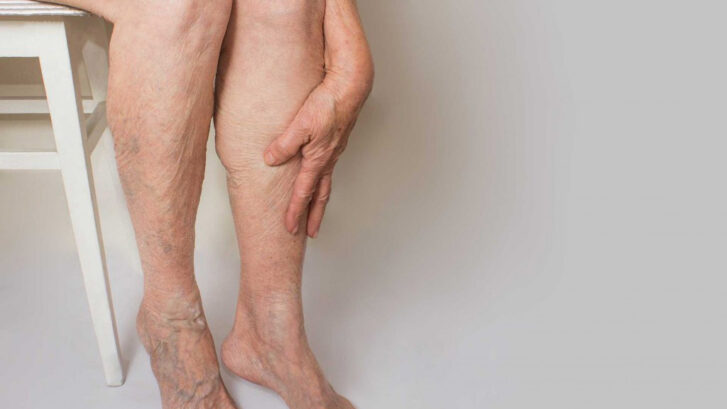Peripheral Artery Disease (PAD) is a common circulatory problem in which narrowed arteries reduce blood flow to the limbs. This condition primarily affects the legs and is often a sign of a more widespread accumulation of fatty deposits in the arteries (atherosclerosis). Understanding PAD, including its causes and symptoms, is crucial for early detection and effective management.
What Causes Peripheral Artery Disease (PAD)?
PAD is mainly caused by atherosclerosis, where fatty deposits build up in the artery walls, reducing blood flow. Several factors contribute to the development of atherosclerosis and PAD:
- Smoking: Tobacco use is one of the most significant risk factors for PAD. The chemicals in cigarettes can damage the blood vessels, making them more susceptible to atherosclerosis.
- Diabetes: High blood sugar levels can damage blood vessels over time, increasing the risk of PAD.
- High Blood Pressure: Hypertension can cause arteries to harden and narrow, leading to reduced blood flow.
- High Cholesterol: Elevated levels of cholesterol in the blood can lead to the formation of plaque in the arteries.
- Age: The risk of PAD increases with age, particularly after the age of 50.
- Family History: A family history of cardiovascular disease can increase the likelihood of developing PAD.
- Obesity: Excess body weight contributes to the development of atherosclerosis and increases the risk of PAD.
Symptoms of Peripheral Artery Disease (PAD)
PAD often goes undiagnosed because its symptoms can be mild or mistaken for other conditions. However, recognizing the early signs is essential for timely intervention. Common symptoms include:
- Claudication: This is the most common symptom, characterized by pain or cramping in the legs or hips during walking or exercise. The pain usually subsides with rest.
- Leg Numbness or Weakness: Reduced blood flow can cause numbness or weakness in the legs.
- Coldness in Lower Leg or Foot: A noticeable temperature difference between the lower leg or foot and the rest of the body may indicate PAD.
- Sores that Won’t Heal: Persistent sores or wounds on the toes, feet, or legs that do not heal can be a sign of PAD.
- Change in Leg Color: Legs may appear pale or bluish due to poor blood circulation.
- Hair Loss or Slower Hair Growth: PAD can cause decreased hair growth on the legs and feet.
- Shiny Skin on Legs: The skin on the legs may become shiny and tight.
- Weak Pulse in Legs or Feet: A weak or absent pulse in the legs or feet can indicate reduced blood flow.
Risk Factors for PAD
Understanding the risk factors for PAD is vital for prevention and early detection. These include:
- 1. Smoking: Current or former smokers are at a higher risk.
- Diabetes: Managing blood sugar levels is crucial to reduce the risk.
- High Blood Pressure: Regular monitoring and control of blood pressure can help prevent PAD.
- High Cholesterol: Maintaining healthy cholesterol levels through diet and medication can reduce the risk.
- Obesity: Achieving and maintaining a healthy weight is essential for vascular health.
- Sedentary Lifestyle: Regular physical activity can improve circulation and reduce the risk of PAD.
Managing Peripheral Artery Disease
Early detection and lifestyle changes are critical in managing PAD. Quitting smoking, controlling diabetes, monitoring blood pressure, and maintaining a healthy diet and exercise regimen can significantly reduce symptoms and prevent complications. In some cases, medication or surgical interventions may be necessary. Dr. Ravul Jindal, a renowned vascular specialist, emphasizes the importance of regular check-ups and proactive management to prevent the progression of PAD.
Concerned about PAD? Consult us for expert advice and comprehensive care to manage Peripheral Artery Disease effectively.


